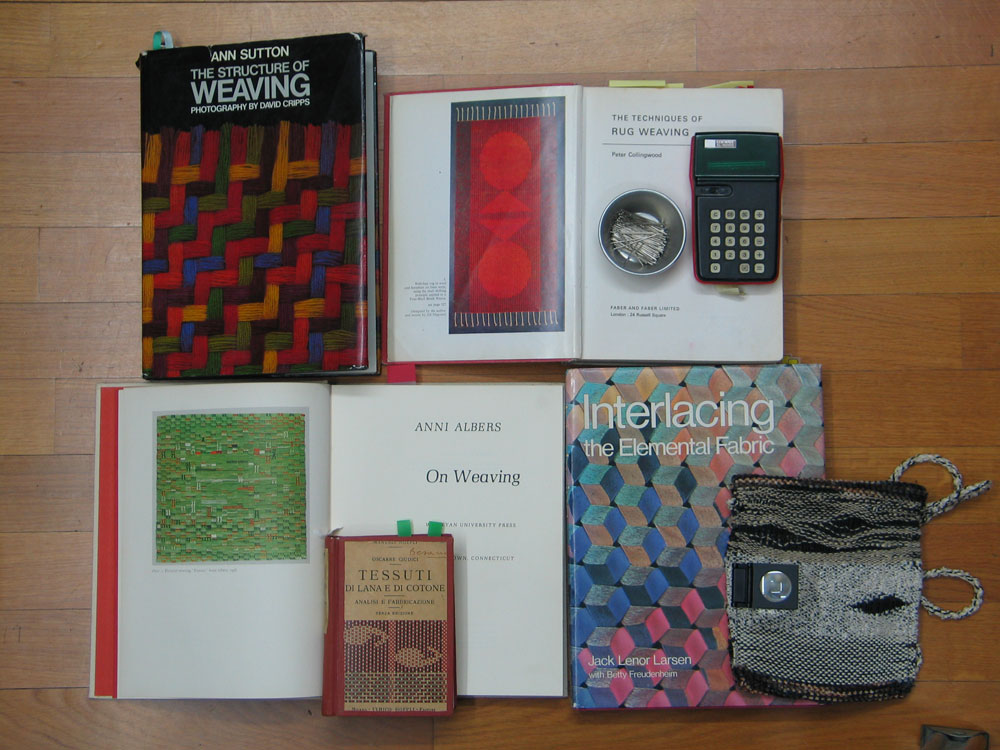Library Introduction to hand-weaving
When we start to weave, as at the start of any other craft, a "dangerous" handbook is one that is full of patterns and projects to copy. The best introduction to hand-weaving are samples, samples and yet more samples, a thread counter to analyze structures, and books that discuss textile structures and their characteristics, instead of just giving instructions on how to weave them. In order to learn to speak the language of weaving, I think it is crucial first to learn it in its many variants, concentrating on the common and less common variants of a given technique, rather than rush to plan utilitarian applications of what is being learnt. The moment will come when the new weaving language will be so familiar that the weaves or the yarns themselves will suggest you what to do with them. I think it is crucial not only to think always about a final object (fibers, techniques and so on), but to start thinking what we can do with a certain material or a certain technique. This is what I call "creativity from within", genuine creativity because it is your own.

ANN SUTTON. The Structure of Weaving. London: Hutchinson, 1982, 192 pages, b&w and col. ill., ISBN 0-09-149500-8
PETER COLLINGWOOD. The Techniques of Rug Weaving. London: Faber and Faber, 1968, 527 pages, b&w and col. ill., ISBN 571 08333 1
ANNI ALBERS. On Weaving. Middletown, Conn.: Wesleyan University Press, 1965, 204 pages., b&w and col. ill., ISBN 0-8195-3059-X
JACK LENOR LARSEN (with BETTY FREUDENHEIM). Interlacing: The Elemental Fabric. Tokyo & New York: Kodansha International, 1986, 278 pages, b&w and col. ill., ISBN 0-87011-778-5 (US) / 4-7700-1278-0 (Japan)
OSCARRE GIUDICI. Tessuti di lana e di cotone. Analisi e fabbricazione. Milano: Hoepli, 1949, 415 pages, b&w ill.
Thread counter, pins, calculator, little “airy” bag.